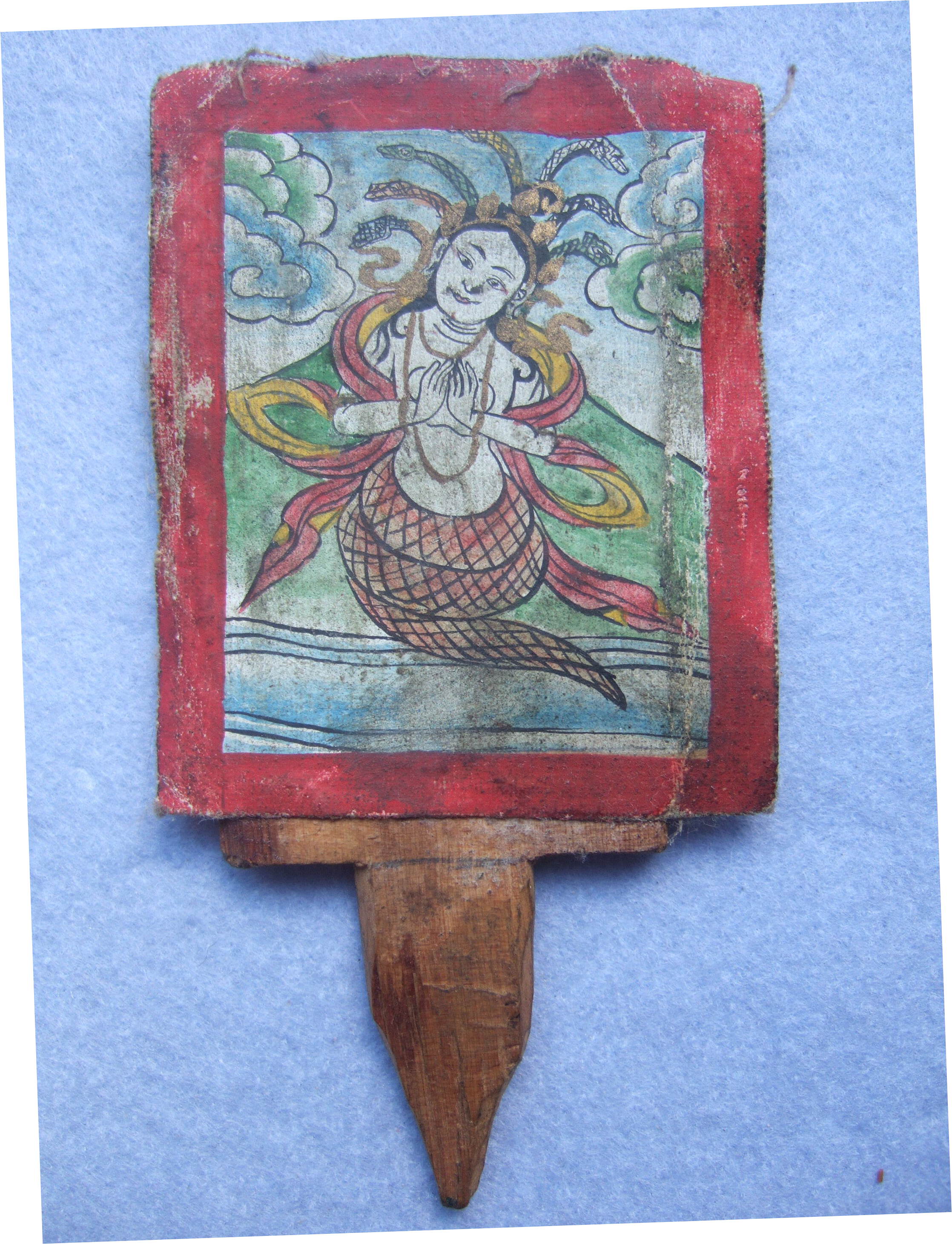Tibetan Tsakli on:
[Wikipedia]
[Google]
[Amazon]
 Tsakli (also “tsakalis”) are
Tsakli (also “tsakalis”) are
Tibetan Buddhist
Tibetan Buddhism (also referred to as Indo-Tibetan Buddhism, Lamaism, Lamaistic Buddhism, Himalayan Buddhism, and Northern Buddhism) is the form of Buddhism practiced in Tibet and Bhutan, where it is the dominant religion. It is also in majo ...
miniature paintings, normally produced as thematic groups or sets, which are used in rituals as initiation cards, and in the training of monks. Examples of this miniature art are also known from Mongolia
Mongolia; Mongolian script: , , ; lit. "Mongol Nation" or "State of Mongolia" () is a landlocked country in East Asia, bordered by Russia to the north and China to the south. It covers an area of , with a population of just 3.3 million, ...
.
Subjects
The subjects found on tsakli are similar to the better known larger Tibetanthangka
A ''thangka'', variously spelled as ''thangka'', ''tangka'', ''thanka'', or ''tanka'' (; Tibetan: ཐང་ཀ་; Nepal Bhasa: पौभा), is a Tibetan Buddhist painting on cotton, silk appliqué, usually depicting a Buddhist deity, scene, ...
scroll paintings on cloth, but much simpler, usually showing only a single deity, or a pair. The subjects are usually deities or ritual objects and offerings associated with these deities are represented on the tsaklis. Occasionally, Tibetan inscriptions on the backside can identify the subjects which are painted on the front.
Ritual use of tsakli
Tsakli are normally painted in sets which can comprise from six to nearly 100 small paintings of similar subjects and are used as offerings in temples or in rituals. For example, before the construction of a temple is begun, the area can be marked with tsakli representing protective deities. In such cases, they are mounted on small wooden sticks. Similarly, tsakli can be used by a Buddhist lama to remove evil influences from a sick person, from a tree which does not bear fruit, or grain which is going to be threshed. A tsakli can also be placed in a portable shrine or box (Tibetan “gau”) and carried to provide protection to travelers or pilgrims who wear the ''gau'' around their neck or on a shoulder strap.Materials
The majority of tsakli are painted on cloth (like most of the tangkas) orcardboard
Cardboard is a generic term for heavy paper-based products. The construction can range from a thick paper known as paperboard to corrugated fiberboard which is made of multiple plies of material. Natural cardboards can range from grey to light ...
. There exist also tsakli which are printed from woodblocks on cloth or paper. Larger sets of tsakli are kept between two wooden covers in a similar manner as pages of Tibetan books are protected.Juan Li: Tibetan Ritual Miniature Paintings, March 17, 1995. http://www.asianart.com/li/li.html#fnt1
Bibliography
*Li, Juan: Tibetan Ritual Miniature Paintings, March 17, 1995 http://www.asianart.com/li/li.html#fnt1 *Karmey, Samten Gyaltsen: The Secret Visions of the Fifth Dalai Lama, The Gold Manuscript in the Fournier Collection Musée Guimet, Paris. Serindia Publications, Second edition, London, 1998 (Numerous tsakli are represented in ritual context in the illustrations of “The Secret Visions” of the Fifth Dalai Lama). *Olson. Eleanor: Catalogue of the Tibetan collection and other Lamaist Material in the Newark Museum, vol. III, Newark, 1971, p. 72. *Stein, R.A.: “Trente-trois fiches de divination tibétaines”. Harvard Journal of Asiatic Studies, 4 (1), 1939, p. 297-371. *Hummel, Andries: Gods, demons and protectors. Tsaklis and other miniatures from Tibet and Mongolia, Cloud Press Delft, Delft, 2018, ; 178 pages (This book deals with a large variety of tsaklis from a private collection, with a few hundred reproductions)References